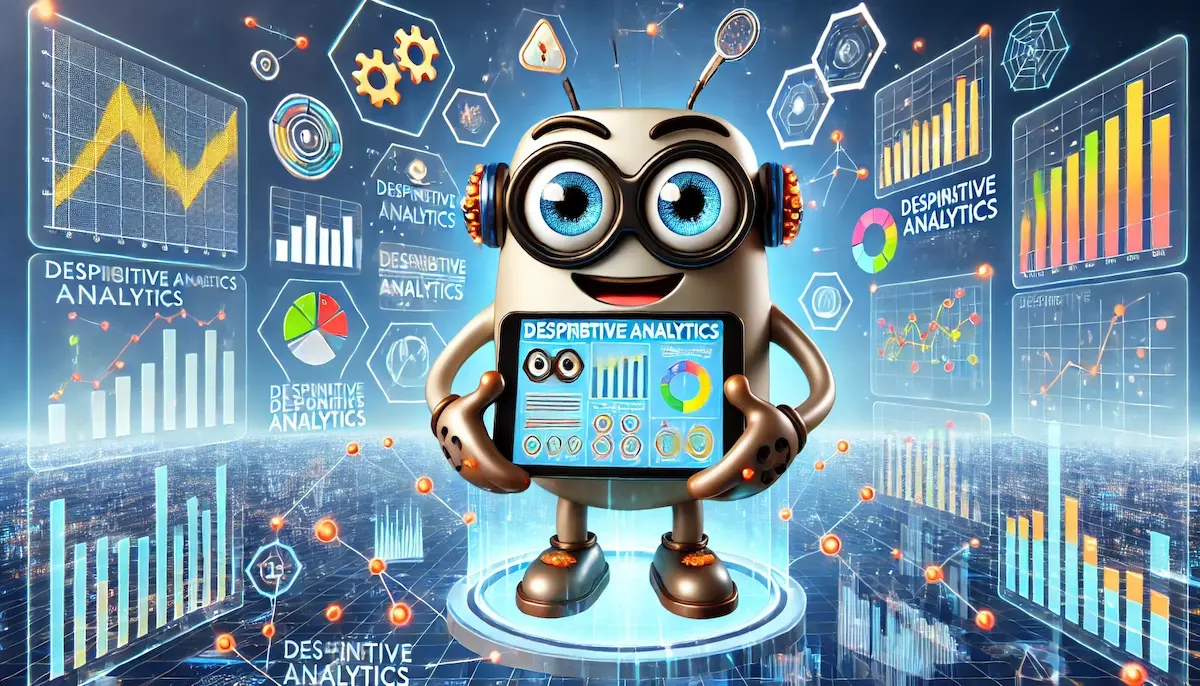Descriptive analytics is the process of analyzing historical data to understand and describe what has happened in the past. It focuses on summarizing data through statistical methods, helping organizations gain insights into past performance and trends. This type of analytics forms the foundation for more advanced analytics, such as predictive and prescriptive analytics, by providing a clear understanding of historical data.
What is Descriptive Analytics?
Descriptive analytics involves the use of data aggregation and data mining techniques to provide insights into the past. It answers questions like “What happened?” and “Why did it happen?” by examining historical data and presenting it in an understandable format, often through reports, dashboards, and visualizations. The goal is to provide a comprehensive view of the past to inform decision-making and strategy development.
Key Techniques in Descriptive Analytics
Descriptive analytics employs various techniques to summarize and interpret historical data. These techniques help in transforming raw data into meaningful insights.
Data Aggregation
Data aggregation involves collecting and summarizing data from multiple sources. This process helps in creating a comprehensive dataset that can be analyzed to uncover patterns and trends. Aggregation can be done at various levels, such as daily, monthly, or yearly summaries.
Data Mining
Data mining is the process of discovering patterns and relationships in large datasets. Techniques like clustering, classification, and association rule mining are used to identify significant patterns and correlations within the data.
Statistical Analysis
Statistical analysis involves applying statistical methods to summarize and describe data. Common statistical techniques used in descriptive analytics include:
- Mean, Median, and Mode: Measures of central tendency that summarize the average values in the dataset.
- Standard Deviation and Variance: Measures of dispersion that indicate how spread out the data points are.
- Frequency Distribution: A summary of how often different values occur in the dataset.
Data Visualization
Data visualization techniques, such as charts, graphs, and dashboards, play a crucial role in descriptive analytics. Visualizations make it easier to understand complex data and identify trends, patterns, and outliers.
Reporting
Reporting involves creating structured summaries of data analysis results. Reports can be generated periodically (e.g., daily, weekly, monthly) and are used to communicate insights to stakeholders. Reports may include tables, charts, and narrative descriptions of the findings.
Benefits of Descriptive Analytics
Descriptive analytics offers several benefits that help organizations understand their past performance and make informed decisions.
Improved Understanding of Past Performance
By analyzing historical data, organizations can gain a clear understanding of past performance. This insight helps in identifying successful strategies and areas for improvement.
Enhanced Decision-Making
Descriptive analytics provides data-driven insights that support better decision-making. By understanding what has happened in the past, organizations can make informed decisions about future actions and strategies.
Identification of Trends and Patterns
Descriptive analytics helps in identifying trends and patterns within the data. These insights can reveal underlying causes of past events and inform future strategies.
Performance Benchmarking
Organizations can use descriptive analytics to benchmark their performance against industry standards or competitors. This benchmarking helps in setting realistic goals and measuring progress.
Operational Efficiency
By understanding historical data, organizations can identify inefficiencies and areas for optimization. This can lead to improved operational processes and cost savings.
Challenges of Descriptive Analytics
While descriptive analytics offers significant benefits, it also presents several challenges that organizations must address.
Data Quality
The accuracy and reliability of descriptive analytics depend on the quality of the input data. Incomplete, inconsistent, or inaccurate data can lead to misleading conclusions. Ensuring high data quality is essential for reliable insights.
Data Integration
Integrating data from multiple sources can be complex and time-consuming. Ensuring that data is consistent and compatible requires careful planning and execution.
Data Volume
Large volumes of data can be challenging to manage and analyze. Organizations need robust data management and analysis tools to handle big data effectively.
Skill Requirements
Effective descriptive analytics requires skilled personnel with expertise in data analysis, statistical methods, and data visualization. Organizations need to invest in training and hiring the right talent to maximize the benefits of descriptive analytics.
Interpretation of Results
Interpreting the results of descriptive analytics requires a good understanding of the data and the context in which it was collected. Misinterpretation of results can lead to incorrect conclusions and poor decision-making.
Conclusion
Descriptive analytics is a foundational aspect of data analysis that helps organizations understand their past performance and make informed decisions. By summarizing historical data through techniques like data aggregation, data mining, statistical analysis, and data visualization, descriptive analytics provides valuable insights into what has happened and why. While there are challenges related to data quality, integration, volume, and interpretation, the benefits of improved understanding, enhanced decision-making, and operational efficiency make descriptive analytics an essential tool for any data-driven organization.
Blockfine thanks you for reading and hopes you found this article helpful.
